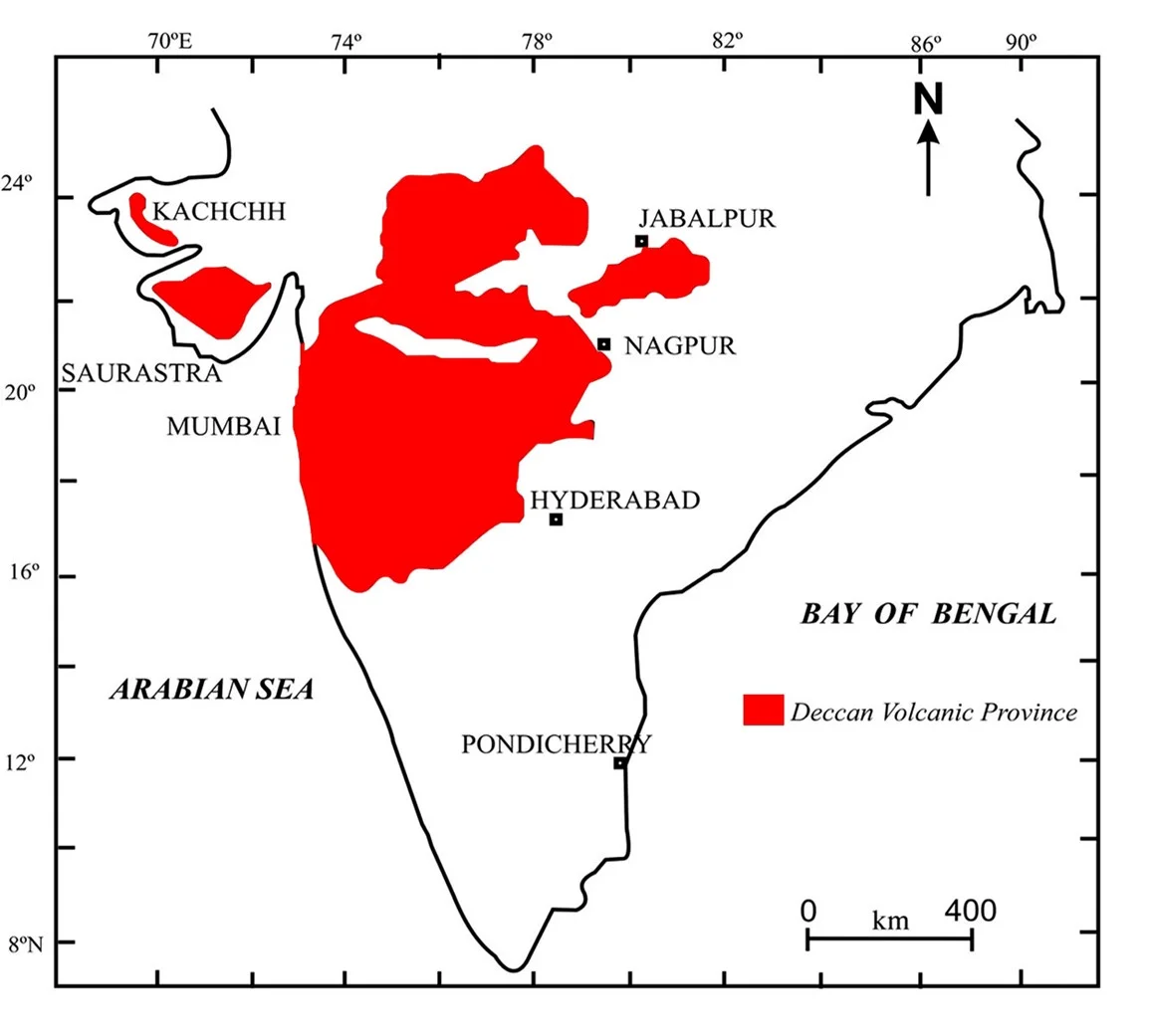Answer:
| Approach:
Introduction
- Write about Deccan Trap in brief.
Body
- Write about the significant natural resources found in the Deccan Trap.
Conclusion
- Conclude your answer with the importance of Deccan Trap.
|
Introduction:
The Deccan Trap is a large volcanic feature located in west-central India. It has several natural resources that are economically valuable.

Enroll now for UPSC Online Course
Body:
Natural resources found in the Deccan Trap:
- Minerals: The Deccan Traps have rich deposits of minerals such as iron, manganese, copper, and gold. These minerals are essential raw materials for various industries, including construction, manufacturing, and electronics.
- Coal: The Deccan Traps have significant reserves of coal, which is used for power generation and various industries.
- Oil and natural gas: National Geophysical Research Institute [NGRI] has found the reserve presence of oil and natural gas in the Deccan region that spreads over a vast area including part of Karnataka, Telangana and Maharashtra.
- Geothermal Energy: It is the source of many springs. The springs in places like Sativli, Mandangad, Aravali, Anjaneri, Rajapur and others, form a cluster of hot springs found in these rock formations
- Hydroelectric power: The Godavari and Krishna rivers originate in the Western Ghats, have the potential to generate hydroelectric power.
- Agricultural land: The fertile soil of the Deccan Trap is ideal for agriculture, and the region is a major producer of crops such as cotton, sugarcane, and tobacco.
- Timber and medicinal plants: The forests of the Western Ghats are rich in timber and medicinal plants, which can be used for various purposes, including traditional medicine, construction, and furniture-making.
Conclusion:
Deccan Traps is a region with diverse natural resources, which can contribute to the economic development of the region and the country. It is important to ensure that the exploitation of these resources is done in a sustainable and responsible manner to minimize their environmental impact and preserve them for future generations.

